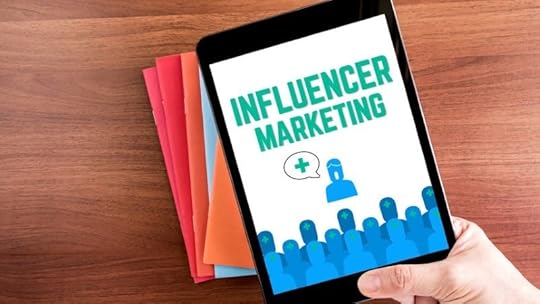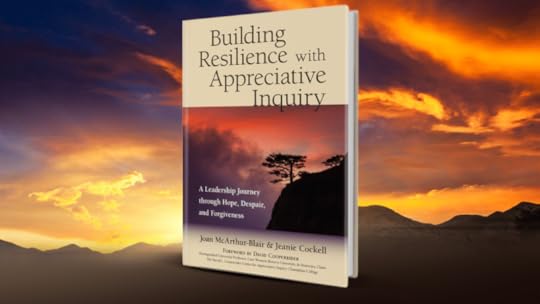Becky Robinson's Blog, page 32
January 15, 2019
Our 2019 Social Media Wish List

We have a love-hate relationship with social media — and we bet you do too. We love connecting with family, friends, and our virtual communities. We don’t enjoy how cranky some of the social platforms can be. So, dear social media platforms, here is what we would like you to change this year.
Instagram is the platform where we would like to see the most changes. As much as we love Insta, it’s not the most user-friendly platform. We really, really want to be able to re-gram, or share Instagram posts from others, within the app. Right now, you have to go through a lengthy process of copying the image and reloading it or use a third-party app that sometimes works and sometimes doesn’t. Being able to re-gram in the app would help build community and allow really great content to be seen by more people.
We would also love to be able to have all of Instagram’s functionality available on the desktop version. Right now, you can search hashtags, follow others, and comment — but you can’t post or add to stories, and we would love to be able to do that on our computers from time to time. Come on, Instagram, you can do it!
Facebook’s algorithm is famously difficult for brands and we would love to see that suppression stop. Forcing all brands, big or small, to advertise or languish in obscurity doesn’t encourage advertising, it just encourages smaller brands to go elsewhere. Help thought leaders out, Facebook — and in the process, make our news-feeds more diverse and interesting!
We also want more transparency from this platform about how they are monitoring content, using our data, and selling information. Facebook made some progress in 2018, but there is much more to do.
LinkedIn has always stressed that individual users should not have someone else login to their accounts, and in 2018, they started enforcing that edict. Logins from different IP addresses resulted in accounts getting temporarily shut down. It shows a complete lack of understanding about how the platform is used. While scheduling tools can still access accounts, individual community managers cannot. LinkedIn, it’s time to get a clue about how we use the platform and give us some sort of management access for individual accounts.
While we are big supporters of LinkedIn ads, we really do not like sponsored InMail messages. LinkedIn, feel free to make this sponsored spam go away.
Twitter has become a platform where we see less and less growth and engagement. It’s time Twitter figured out what it wants to be when it grows up, and start moving in that direction. That means shutting down hate speech, abuse, and bullying, and giving legitimate content more support and visibility.
These are a few of changes we would like to see on social media in the coming year. What’s on your wish list?
January 11, 2019
Open-Minded Goals

I love the way our home looks at Christmas. I love the lights and the greenery, the giant tree, the cozy throws and pillows, the sound of jingle bells on every door. It’s warm and welcoming, just the way the holidays should make one feel. But as much as I enjoy it, I also appreciate the way it looks after the festive is packed up and the needles swept away. It’s such a stark contrast — busy and full to clean and open — and to me it epitomizes the freshness of the new year.
Whether we’re intentional about it or not, January finds most of us reflecting on what has been, and what we would like to change in the next 12 months. We talk about it with our friends, Instagram our goals, and Pinterest the possibilities. We create inspirational graphics to motivate us, or — in the case of a friend of mine — embroider it on a hand towel as a daily reminder.
As an INTJ, I am a big proponent of ongoing growth and the idea that we’ve never arrived. Anyone who has worked with me knows I’m quick to point out that there’s always room for improvement — in ourselves and our processes. I love calendar day, when I start with 12 empty months and begin to fill in possibilities in pencil (even better are the days when pencil possibilities change to plans in ink!). Looking ahead and setting big goals gives us something to aim for and keeps us motivated when we get to the less exciting parts. This is true whether you’re writing a book and planning for a launch or working towards being debt-free. Goals are good!
But then there’s the question of what kind? Do you stop at grand, overarching ideas that you’d like to achieve . . . someday?
Write a book
Launch a speaking career
Spend more time with family
Become a mentor
Or are you more intentional, setting specific goals to be accomplished by a set date, with their own checklist of steps required to get there?
Write 700 words a day
Land 6 speaking engagements by June 1
Book beach house August 1-7 for family vacation
Fill out paperwork to begin volunteering at youth center
Or maybe it’s a bit of both.
Sometimes it helps to break it down from a larger idea/word (e.g., Time) into smaller, bite-sized specifics (i.e., more time with family>schedule a day off each month to make plans for a longer vacation>book rental house). In the Weaving Influence Book Marketing group, we’ve been taking polls and chatting with group members about what their marketing and writing goals are . . . not for the year, just for this first month of 2019. Smaller bites make the mountain look a little less intimidating.
And for those of us who, in addition to actionable goals, appreciate the idea of a word for the year, I share this to close. I read a post this week from a friend who really wanted to pick a word that would summarize what she hoped the year would hold for her, professionally and personally. But after all of her introspection and list making, she realized that she was actually embracing the idea of a year of the _______, open to all the unknown and endless possibilities. Speaking as someone whose life has changed drastically in the last two years, her openness to whatever comes really resonated with me.
Open, by the way, is my word of the year. Open to change, open to growth, open to stepping outside of my comfort zone, open to doing more. While I have a list of dreams rolling around in my head (write a book, research vacation possibilities, schedule home renovations), more than anything I just want to be open to what 2019 will bring — the unknown and the endless.
How about you?
January 8, 2019
5 Tools to Make This Your Best Marketing Year Ever

There’s something about opening a new calendar that urges us to spend time reflecting and refocusing for the year ahead. We come out of the holiday season tired of looking at last year’s unfinished projects, fatigued by too little rest and too many sweets, and eager to reset our brains and bodies. That makes the beginning of a new year the perfect time for re-evaluating strategies, adjusting goals, and focusing on new directions.
Maybe you’ve done that already. Maybe you’re still working through it. Maybe life is crazy, and you settled for a single word or focus for the next twelve months instead of stressing over accomplishing specific goals this year.
Whatever your approach to accomplishing things in the new year, whatever your goals or focus might include, here are some recent tools from Weaving Influence that can help you continue moving forward in 2019, and make this your best marketing year ever.
Facebook Live Videos
Want access to book marketing tips and inspiration from other authors and thought leaders? Check out our regular Facebook Live sessions, available on the Weaving Influence page. Our CEO and founder, Becky Robinson, meets virtually with authors across the country to discuss their top book marketing ideas, strategies for success, and favorite book launch tools. Don’t miss out on this easy opportunity for continued learning! Access past videos here.
Book Marketing Action Guide
What are your book marketing goals for this year? How are you planning to accomplish them? Over the years, we’ve spent countless hours testing and refining our book marketing methods, and have figured out a comprehensive strategy that any author can use to launch their book successfully.
The Book Marketing Action Guide is a comprehensive course designed to help you build your platform and get your books to the audiences they were written for. It walks you step-by-step through the four phases of a book launch: building, working, launching, and advancing. Learn more here.
Content Library Automator
If you’ve been blogging for a year or several years, you’ve accumulated a wealth of content. Are you making the most of your investment? We’ve created a one-of-a-kind DONE FOR YOU resource to help.
Our Content Library Automator provides a valuable tool to cut your effort in organizing your existing blog content and creating new content to share. It also creates templated social media posts to highlight your archived content. You can utilize it to streamline daily social media posting, quickly craft new email marketing messages, find inspiration for creating new content, and jumpstart larger projects from a neatly categorized archive of topics. Learn more here.
Free Ebooks
Looking for blurbs? Book endorsements from well-known people provide important credibility and social proof for your book. Learn how to seek endorsements for your book with Making the Ask, our step-by-step guide for how to best approach your dream endorsers. Download here.
Just need some inspiration for your journey? Whether you’re running your first marathon, starting a new venture, or well into your business journey, you’ll find ideas, inspiration, and encouragement in the pages of Setting the Pace. Paired with questions for personal reflection, each section will give you insights for your journey. Download here.
What are some of your book marketing goals for this year?
December 21, 2018
The Art of ‘Giving Up’

At Weaving Influence, we’re well known for telling our clients that finding success on social or selling their book is more like a marathon than a sprint. But would you be surprised if we also told you that we think it’s okay to give up?
We’ve been launching books and supporting authors since early 2012, and during that time our team has watched trends come — and go. When you’ve worked hard to develop plans and processes, we know how hard it can be to give up on them. However, if you want to find success in the future, then it’s important to be honest in your assessment of what’s working and be willing to give up on what’s not.
Facebook is a prime example of how things change and why we need to constantly flex and adapt.
Back in 2012, the commonly accepted “best practice” was to set up a professional Facebook page for every book. If an author had three books, that was three Facebook pages to organize, set up, and run; three pages to provide content for and get people to like.
When this became unpopular, we created “evergreen” author pages. We renamed and reorganized and things picked up again for a time. We changed headers and profile images to promote launches and encourage sales, but engagement on pages was dying. So what next?
Launch groups, of course! It required more in-the-moment engagement time and some extra planning, but it was absolutely worth it. People loved having direct access to the author for Q & A sessions. They loved feeling like they were a part of an exclusive club. That is, until everyone had a club and it no longer felt exclusive.
In 2018 — if you hadn’t totally abandoned Facebook for Instagram — it was all about Facebook Live. And if you still have a page and plan to share content then you need to find a budget. Advertising and sponsored posts are what get you in front of the masses, at least until you do something that makes you note (or news) worthy.
The point here is — it’s always changing. What we’ve learned is that it’s not so much about “giving up” as it is about being flexible and connecting to your audience. Let’s face it, Facebook Lives are just the 2018 version of Tweetchats. People still want to connect with you, it’s just the way of doing it that changes.
But some things never change (nor should they), for example:
Owning your home on the web. The only site you can totally control is your own, so create a site that will grab any visitor who stumbles upon it — whether they get there from Facebook, Instagram, Twitter, or LinkedIn. We see no expiration date for this one.
Graphics are king. No matter where you end up, we’re all short on time and everyone loves a visual, so get creative! Utilize tools like Canva to create graphics that will grab the attention of your audience, and can be repurposed when needed elsewhere.
Showing up. We don’t care where you end up, but you need to show up if you’re going to be there. If you have a blog (and we believe you should), then you need to write regularly. If you just love LinkedIn, then leave comments, share posts, and reach out to contacts. Wherever you are — show them the real you. Authenticity sells.
If you’ve been trying to build an audience following on a specific social media site, but it’s sapping your time and energy and giving you nothing in return, pull the plug on it!
Don’t hold onto something that’s not working for you and your audience. Experiment, research what others in your genre are doing, step out of your comfort zone, and when you find what clicks — enjoy it while it lasts.
If you’re interested in receiving personalized recommendations for optimizing your channels and making the most of your online presence, consider contacting us to book a consultation with our team in 2019!
December 18, 2018
Influencer, What?

I currently subscribe to roughly 129 podcasts. That’s only a slight exaggeration. The podcasts are mostly about true crime, but also business, marketing, comedy, and news. I even subscribe to a podcast that is designed to help you fall asleep (Sleep With Me – I recommend it for all of us insomniacs).
Most of these podcasts do feature paid advertisements through sponsors. However, I’ve often often found myself paying attention when a podcast host mentions a movie they saw recently or a book they enjoyed. I’ve checked out products the hosts have mentioned, particularly if they didn’t mention it as part of a paid ad. Along the same lines, I’ve actually learned about most of the podcasts I listen to because a friend or another podcast recommended it, either on social media, in person, or on the air.
I’m not alone. A recent study shows that 61% of consumers rely on social media, friends, and influencers as the most important factor in making a decision about shopping or what media to consume. In 2017, Influencer Marketing Hub asked followers to rank their fastest-growing online customer-acquisition methods. 28% named influencer marketing as number one.
But what is influencer marketing? More importantly, what is an influencer?
Simply put, an influencer is anyone who has influence over what you purchase or consume. You may know this person (for example, a Facebook friend) or you may just know of them (for example, the podcast hosts I listen to.)
Influencer marketing is a type of marketing that focuses on using key leaders to amplify your message. Rather than reaching out directly to audiences through their own social media and advertisements, companies are instead inspiring, recruiting, or paying influencers to spread their messages for them.
Research shows that consumers are more likely to trust their friends or connections than a company’s own advertisements. It makes sense, then, that businesses would want to capitalize on this trend and tap into new audiences through influencers. The influencers are already seen as key leaders and people already follow them. Influencer marketing allows brands to take advantage of the audiences of these influencers.
Brands began utilizing larger influencers several years ago to increase their sales; but in 2018, a new category of influencers arose. Nano- and micro-influencers became increasingly important. Nano-influencers have anywhere from 100-10,000 followers. While this may not seem like a lot compared to the millions of followers of some celebrities, nano-influencers have earned a level of trust and relationship with their followers that make them even more influential and valuable to brands. They are also usually more cost-effective than celebrity endorsements.
But what does all of this mean for your book launch or speaking engagements?
The rise of influencer marketing offers tremendous opportunities to help promote your book or your thought leadership. For instance, Weaving Influence’s Team Buzz Builder and network of media and podcast contacts were developed to help expand and amplify your message, even before influencer marketing was a household term!
By tapping into the audiences of Team Buzz Builder, Weaving Influence is able to help spread the message of your book, and is also positioned to reach out to other key influencers in order to raise awareness of your books and ideas.
As you think about marketing your book, be sure to consider what influencers you can reach out to. Weaving Influence is here to help!
December 14, 2018
LeaderSHOP: Advice From Today’s Top Thought Leaders

Henry Ford said anyone who stops learning is old, whether 20 or 80. And anyone who continues to learn is forever young. This week’s book launch is positioned to help you do just that. If you’ve ever wondered how to improve at learning, leading, serving, listening, planning, and practicing all the behaviors that make for better relationships, more productive work, more satisfying careers, and more fulfilling life . . . then read on!
LeaderSHOP
Do you wish you could eavesdrop on conversations with some of today’s smartest thought leaders? Here’s your chance.
LeaderSHOP provides candid talk from experts like Stephen M.R. Covey, Brian Tracy, Doug Conant, Sally Helgesen, David Ulrich, Bill George, Laura Vanderkam, Mark Sanborn, and dozens more.
Coach and bestselling author Dr. Rodger Dean Duncan asks these experts the questions most pertinent to your success at work and in life. Their responses will inspire, motivate, and possibly even surprise you. And one thing’s for certain: they’ll make you smarter and better prepared to perform at the next level.
With a foreword and additional commentary by Marshall Goldsmith, the world’s only two-time #1 Leadership Thinker, LeaderSHOP is sure to become a favorite item in your personal development toolkit.
Meet the Author
 After an early career as an award-winning journalist and university professor, Dr. Rodger Dean Duncan founded Duncan Worldwide in 1972 to serve the needs of organizations seeking to boost performance. His client roster includes senior leaders at top companies in many industries as well as presidential cabinet officers in two White House administrations, and the company has affiliates around the globe.
After an early career as an award-winning journalist and university professor, Dr. Rodger Dean Duncan founded Duncan Worldwide in 1972 to serve the needs of organizations seeking to boost performance. His client roster includes senior leaders at top companies in many industries as well as presidential cabinet officers in two White House administrations, and the company has affiliates around the globe.A highly-sought-after speaker, trainer, and executive coach, Rodger is widely known for his expertise in the strategic management of change – for individuals as well as for organizations. He keynotes many industry conferences and workshops related to human performance and organizational effectiveness. In addition to his consulting practice, Rodger was advisor to cabinet officers in two White House administrations, and headed global communication for Campbell Soup Company, and was vice president of a global energy company. He’s also served on the faculties of three major universities, and been leadership coach to senior officers in more than 100 companies in multiple industries.
Rodger earned a PhD in communication and organizational dynamics at Purdue University. The Duncan Report, his blog on leadership and organizational effectiveness, now reaches opt-in business subscribers in more than 150 countries. Rodger is also a frequent contributor to Fast Company and Forbes magazines, and author of the internationally bestselling book CHANGE-Friendly Leadership and his newest title, LeaderSHOP.
Praise from Readers Like You
“When reading ‘LeaderSHOP’, I found answers to questions that I have been asking myself for years. I was able to find answers, through the questions asked by Dr. Duncan. Questions are asked in a way that it is easy for a person, on any level, can understand and learn from.
“
— Renee D Heathman, 5-star Amazon review
“Each brief chapter and interview provided useful insights, sprinkled with humor, and actually gave readers an overview of actionable steps to take. The different interviews touched on such a broad range of topics – from trust and teamwork, to etiquette, to communication, and more. Most (if not all) of the chapters had lessons that can be applied in both a work and personal setting.”
— Katherine B, 5-star Amazon review
“Unlike so many other leadership books, this is NOT a cookbook with a recipe for leadership success. Instead it opens into a VAST spice cabinet of leadership essentials, each with its own distinct flavor, practically daring the reader to use it in one’s own personal leadership blend.”
— Galen McPherson, 5-star Amazon review
“Regardless of whether one is a junior or a well-seasoned veteran of the organization, this book will provide the opportunity to consider how one is fulfilling their leadership role, as well as tools, concepts, and highly relevant suggestions for learning and development.”
— Jacqueline, 5-star Amazon review
Learn More
Visit the website to take a free quiz, and download all sorts of helpful resources.
Buy a copy of the book, or leave a short review of it, on Amazon.
December 12, 2018
Book Marketing in 2018: What Worked (and What Didn’t)

As with social media, digital marketing tends to fluctuate with the change of the calendar each year. Here are the top marketing trends we saw in 2018 for what worked . . . and what didn’t . . . in the world of book marketing.
Instagram is a must.
Visual posts are growing in popularity and demand. We have been encouraging our authors to use Instagram, and to post personal photos to supplement book content or work-related posts. See, for instance, Cheryl Bachelder. Audiences love it! The key is to share what makes a difference to you, share your own unique voice, share engaging graphics that draw others in, and most of all, be yourself. Bonus points for trying out IGTV!
Launch groups are a bust.
Participation in these groups has waned over the past few years, and we’ve seen very little return on the time investment needed to manage these groups. Authors are less interested in keeping up with posting in them every day, and audiences would rather simply sign up elsewhere for a review copy and then follow the author’s public page.
What works instead?
Webinars. A 30-60 minute “live” discussion provides high exposure for your work and your book, plus it offers a more personal experience for your audience. Share the key message of your book, plan an interview to liven things up, and involve other people in the discussion as much as possible. Bonus points if you provide time for a Q&A!
Clear calls-to-action. How do you want people to support your or your book launch? Give them clear, personalized asks (i.e., not generic mass-emails) and easy ways to implement your requests. Provide a link to your book page on Amazon, and explain clearly how they can leave a review. Or request that they forward the email to someone in their organization with a note of their own.
Showing up is no longer optional.
Although not a new concept, authors who actively engage their own networks seem to have a higher impact launch. For instance, several of our authors have chosen to send out personal notes to key influencers with a gift and/or copy of the book. Others have focused on engaging their email networks with consistent, compelling messages. All of them have seen fantastic response in terms of continued audience engagement.
Another successful approach has been newsjacking — inserting authors’ expertise into conversations already happening in the news cycle, rather than simply pitching the news of a new book. New books come out everyday, that’s not what is novel — what’s novel is the content of your book. By highlighting the timeliness and relevance of a book, rather than simply announcing its existence, you highlight why your book matters to that audience at that moment.
Tell me something! What worked — or didn’t work — for YOUR book marketing this year?
December 7, 2018
Building Resilience with Appreciative Inquiry

All leaders seek to be resilient in their work and their lives, to withstand what organizations and life can throw at them, and to rise again from despair. But no one can predict what challenges, issues, and random events they will be called on to face. We need tools and practices in place before those situations arise, or we will fail to advance our resilience.
This week, we’re honored to launch a book that shares how to use Appreciative Inquiry as a tool to help navigate difficult situations in all aspects of life. It is a commentary on the journey towards resilience, and a guide for using appreciative inquiry to navigate the constantly evolving landscape of hope, despair, and forgiveness.
Building Resilience with Appreciative Inquiry
Leaders cannot predict the complex challenges they are called on to face. Veteran consultants Joan McArthur-Blair and Jeanie Cockell show that Appreciative Inquiry (AI) is an invaluable tool to build resilience.
AI is a widely used change approach that emphasizes identifying what’s working well in a system. Leaders can use AI to increase their ability to weather the storms they’ll inevitably encounter and be resilient. A profound guide, this book features personal accounts from leaders across a variety of settings describing how they’ve practiced appreciative resilience in the ongoing cycle of hope, despair, and forgiveness.
Meet the Authors
 Dr. Joan McArthur-Blair, co-president of Cockell McArthur-Blair Consulting and co-author of Building Resilience with Appreciative Inquiry, is an inspirational writer, speaker, and facilitator. Joan specializes in the use of Appreciative Inquiry to foster leadership, strategic planning, and innovative strategies for organizational development. She is a powerful speaker, writer, and facilitator who grounds her work in a deep passion for learning, change, and the possibilities of a positive future. She brings to her consulting work over 25 years in higher education, from faculty to president.
Dr. Joan McArthur-Blair, co-president of Cockell McArthur-Blair Consulting and co-author of Building Resilience with Appreciative Inquiry, is an inspirational writer, speaker, and facilitator. Joan specializes in the use of Appreciative Inquiry to foster leadership, strategic planning, and innovative strategies for organizational development. She is a powerful speaker, writer, and facilitator who grounds her work in a deep passion for learning, change, and the possibilities of a positive future. She brings to her consulting work over 25 years in higher education, from faculty to president.
Dr. Jeanie Cockell, co-president of Cockell McArthur-Blair Consulting and co-author of Building Resilience with Appreciative Inquiry, is a dynamic facilitator known for her ability to get diverse groups to work collaboratively together. For twenty years, Jeanie has served as an educational and organizational consultant helping people, organizations, and communities build positive futures and respond effectively to change. Her background includes teaching and leadership roles in education.
Praise from Readers Like You
“The Resilience Model presented in the book provides hope in and of itself – a positive roadmap to resilience. The personal stories from the authors as well as others brought the concepts alive and deepened my understanding of the potential for this approach. . . . The authors have shared not only their personal perspectives from years of experience but have also shared the outcomes from their lifetime body of work so that we all can learn and benefit.”
— J. Hoyt, 5-star Amazon review
“Too often, in my opinion, leadership theory focuses only on being positive, hopeful and even charismatic. Those of us who have also found part of our journey as leaders to involve feelings of total despair wonder what we are doing wrong and if we have what it takes to lead. This book provides assurance that this is part of the journey and helps describe the opportunities to be forgiving and build resilience.
“
— Patricia Bradshaw, 5-star Amazon review
“This book will be a go-to tool for me for many years to come. It is written and presented in a format that allows for note-taking, making reference points, and has very self-sufficient graphics. It will add to the culture of any organization.”
— Charlie Means, 5-star Amazon review
Learn More
Visit the website to learn more about the book and its authors.
Buy a copy of the book, or leave a short review of it, on Amazon.
Watch the recent webinar to hear directly from Joan and Jeanie.
December 4, 2018
Social Media in 2018: A Look Back

One of the most exciting things about social media is how quickly it changes. This time last year, we were excited about live streaming and its power to help build and grow thought leadership. What a difference a year makes! Now, live streaming is an important part of most social strategies, and our big focus this year has turned to how to protect user data and prevent manipulation of social media.
Highlights (and Lowlights) from 2018
The Cambridge Analytica scandal brought to light how little social platforms were doing to protect user data. In fact, it revealed that the platforms regularly shared and sold information. The scandal, plus a series of congressional hearings, kicked off an exodus of Facebook users. The platform saw its share price drop, too. Just recently, an investigative report on Facebook further demonstrated how poorly prepared the company’s leadership was to protect data and prevent mis-use by Russian misinformation specialists and others.
While Facebook continues to work on these issues, the European Union enacted the most important piece of legislation to protect users’ data — GDPR, or the General Data Protection Regulation. This law requires companies to ask for consumer permission to use, share, or sell their data. Social media platforms are international enterprises and they are all now GDPR compliant.
Data concerns and negative content fatigue has driven many people to step away partially or permanently from social media. Facebook and Twitter have suffered the most loses. Both have seen user numbers fall in 2018. That doesn’t mean these aren’t viable platforms, it just means their demographics are shifting.
Twitter launched a campaign this year to address misinformation and manipulation by removing bot and phony accounts. Instagram has taken a similar approach by going after fake followers.
Influencer marketing also became even more powerful this year and shows no signs of abating. Influencers are so powerful on social media, just one tweet from Kylie Jenner cost Snapchat $1.3 billion dollars after she complained about a site redesign.
But it wasn’t all doom and gloom! There are some bright spots and cool things to try in what’s left 2018 and well into 2019.
Videos and live streaming are stronger than ever. If you aren’t using video content, it’s time to jump onboard. New statistics predict 80% of internet traffic will be made up of videos by 2020.
Ephemeral content is visual content only available for a short time, such as Facebook or Instagram stories. (Snapchat is all ephemeral content but has proven less valuable to thought leadership.) This type of content gets great engagement and is a way to create interest.
This is the perfect time to try a new platform or let go of one that’s just not working for you. YouTube, Instagram, and Snapchat are the top platforms for people 18-30; while users over 30 are showing up on Facebook, Instagram, and LinkedIn. Twitter isn’t tops with any age group; neither is Pinterest. If you’ve been spending time there and getting little benefit, it might be time to walk away. Conversely, if you aren’t on Instagram, the time to create an account is now.
Going into 2019, we will continue to monitor data usage and misinformation campaigns on social media. Those issues are on-going. But on a lighter note, we’ll also be exploring more ephemeral content for our company and our clients. We’ve already created a weekly live stream, and will continue to explore other live opportunities.
What are you going to try on social media before the year ends?
November 30, 2018
Why I Keep Putting Off the Holiday Spirit

I’m an “anticrastinator.” What’s an anticrastinator? Well, it’s a word I made up — but I define it as someone who hates to procrastinate. If I have something I need to do, I can’t put it out of my head until it’s done. This has served me well, but has also been to my detriment. I completed many college term papers only to have the assignment changed on me, or finished projects only to have new information come in and alter the aim.
While this has been a lifelong habit, it ceases around the holidays. I fail to make plane tickets to visit family before prices go up and travel windows close. I drop the ball on buying gifts, so I am scrambling at the last minute. And, I’m slow to nail down plans, frustrating my loved ones.
After some reflection, I think I have figured out why I put off such duties. And, the reasons are not unlike reasons that lead others to procrastinate in the workplace. Thankfully, I have the pleasure of working with many smart authors and thought leaders whose advice can help me over these hurdles during the holidays — and hopefully help you too, whether it’s wrapping gifts or wrapping up a work project.
Lack of Clarity
One reason why I fail to buy gifts or make plans is because I don’t know what people expect of me, so I freeze. How long does my family expect us to visit? Does my mother-in-law really want paper towels for Christmas, or is she kidding?
Karen Martin, author of Clarity First: How Smart Leaders and Organizations Achieve Outstanding Performance, pinpoints ambiguity as the root cause for most problems within organizations. And I have found her process of getting CLEAR, which explores how leaders and organizations can boost performance by operating with greater clarity, works in personal and individual contexts.
Here’s how it works:
C: Clarify and break down the problem. Walk through a set of questions to deeply understand what problem you are trying to solve.
L: Learn about the problem and what’s causing it. Dig deep and understand why the problem exists.
E: Experiment with countermeasures. Start looking for possible solutions to the problem.
A: Assess the results, and adapt or abandon. Take a step back and study what happened, and decide if it is the result you want.
R: Roll out and reflect. Investigate if you want to formally change the process with the countermeasure you decided to adopt.
Because of Karen’s CLEAR, I’ve realized I don’t know what to get my mother-in-law for Christmas because she doesn’t like “things” — so I’ll experiment with gifts that revolve around experiences and creating memories.
Conflict Avoidance
Yes, holidays are a time of togetherness. But that togetherness can also breed conflict and passive aggressiveness — underhanded comments, muttering under the breath, or flat-out screaming. It’s inevitable when you mix people together of various personalities and expectations.
But Nate Regier, author of Conflict without Casualties, says conflict isn’t a bad thing. It can actually be used to harness innovation and creativity. And he has especially good advice in how to handle passive-aggressive behavior, which he says is a gap between what someone wants and what they are getting.
“Instead of dealing directly and assertively with this conflict, some people avoid it, and then attempt to close the gap in other ways. This comes out in sarcasm, avoidance, mean-spirited comments, or behind-the-back gossip,” he explained.
What to do? Confront the passive aggressive person with openness, resourcefulness, and persistence.
Openness. You owe it to yourself and the other person to share how you are feeling. Do you feel angry? Confused? Embarrassed? Defensive? It may feel vulnerable, but it’s critical for creating a safe, open space to engage conflict directly. Avoid blaming the other person for your feelings and avoid using self-victimizing feelings like “attacked” or “demeaned.” Don’t give anyone else that much power over you. It only puts them on the defensive.
Resourcefulness. What questions do you have about what’s really going on? What did you miss? What might they know that you don’t? What do you want to know? What information are you missing? It’s OK to ask for information about what’s going on. And it’s OK for you to explain what you’ve observed. The better you can understand the gap that led to their passive aggressive behavior, the closer you get to a healthier solution.
Persistence. This is about boundaries and principles. What’s at stake here? Why is it important for you to confront what’s going on? What values or aspirations of yours are relevant here? It’s OK to share these as context for why you want to deal directly with conflict. Caution: don’t push your values, or criticize others for not living up to a higher standard.
Next time we hear a comment about how someone doesn’t get enough time with our kids, I know how to structure the conversation to meet the conflict head-on.
Fear of the Unknown
My husband and I used to travel a lot before we started a family. But now that we have kids, fear has often kept us homebound. Fear of plane delays, illness, and disrupted sleep schedules has definitely made me wary of making that holiday trip to Chicago every winter.
But Cheri Torres, co-author with Jackie Stavros of Conversations Worth Having, has excellent advice for how to prepare for the worst. She says it’s a matter of mindset, personal worldview, and personal beliefs/values.
“If your sense of worth and being OK is tied to everything going well, when the worst comes, it topples your life. If you — your being — is not attached to ‘the way things are’ then it frees you to ask creative and helpful questions if the worst happens,” she explained.
So, if our plane gets stuck on the tarmac for hours and our kids are tired and restless, instead of asking why this terrible thing happened to ME, I need to see the events in a much broader context. I can ask questions like:
I wonder what this is about?
What is there to learn or see in this situation that might be important?
What’s possible, now that THIS has happened?
Cheri says, when the worst befalls, it’s time to look at our strengths and values, and reassess what’s truly important and reflect. Good advice for any challenge we may face in life.
Thanks to these helpful insights, I’m ready to start shopping, planning, and securing flights. I hope they help you do the same — at work and at home.
Happy holidays!



